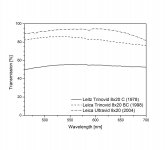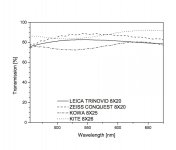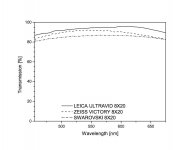SeldomPerched
Well-known member
Can anyone help, as internet searching has at best come up with ambiguities? The first and for nearly 25 years only binoculars I had were a compact pair of green armoured Trinovid 8x20 BCA in a little black leather etui or case. I thought they were amazing - that is till I got my first full-size 42s, a close out UV HD pre-plus 8x42. Then they just seemed fiddly but I will never part with them. (The 8x42 is long gone.) Gary retightened the hinges and recollimated the glass and they are not so bad now after all, but still a bit fiddly comfort-wise on the eye, however you hold them. First world problems...
I'm just looking to find the light transmission percentage. Serial no. from memory -- I know; how sad -- is 1205419 and they were bought new in 1993. I found a chart by Gijs but couldn't be sure it referred to my model. Anybody know?
Tom
I'm just looking to find the light transmission percentage. Serial no. from memory -- I know; how sad -- is 1205419 and they were bought new in 1993. I found a chart by Gijs but couldn't be sure it referred to my model. Anybody know?
Tom
Last edited:







